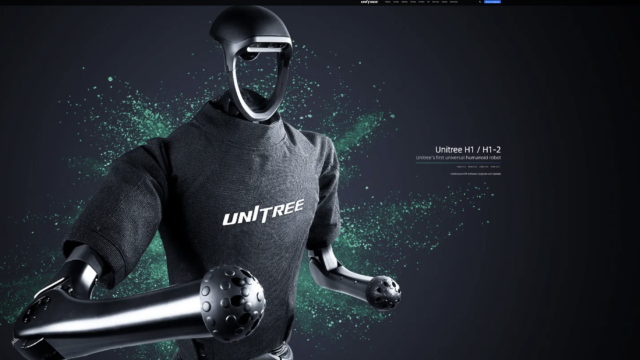In recent years, China has emerged as a global leader in robotics, with companies like Unitree Robotics pushing the boundaries of what machines can do—including dancing. From synchronized group performances to freestyle moves, Chinese robots are captivating audiences worldwide, blending cutting-edge technology with creative expression. But how do these robots work, and how far is China advancing this field compared to global competitors?
The Mechanics Behind Robot Dancing
Dancing robots rely on a sophisticated interplay of hardware and software. Key components include:
- Actuators and Servo Motors: These provide precise control over limb movements, enabling swift kicks, spins, and balance adjustments. Unitree’s quadruped robots, such as the Go1, use high-torque motors to mimic animal-like agility.
- Sensors and Balance Systems: Inertial Measurement Units (IMUs) and force sensors allow robots to maintain stability during complex dance sequences, even on uneven surfaces.
- AI and Machine Learning: Algorithms process motion data to choreograph dances. Some robots learn moves via motion capture from human dancers, while others use reinforcement learning to refine their routines autonomously.
- Real-Time Processing: Onboard computers analyze environmental feedback (e.g., stage lighting, audience position) to adapt movements dynamically.
Unitree Robotics: A Pioneer in Entertainment Robotics
Hangzhou-based Unitree Robotics has become synonymous with agile, affordable robots. Their flagship model, the Unitree Go1, gained fame for its ability to backflip, sprint, and even “boogie” to music. Unlike bulkier industrial robots, Unitree’s designs prioritize lightweight materials and energy efficiency, making them ideal for entertainment.
In 2023, Unitree showcased a group of Go1 robots performing a synchronized dance at the World Artificial Intelligence Conference in Shanghai, demonstrating flawless coordination through wireless communication systems. Such performances highlight China’s focus on merging technical precision with artistic appeal.
China’s Position in the Global Robotics Race
While U.S. firms like Boston Dynamics dominate headlines with robots like Atlas and Spot, Chinese companies are closing the gap—and sometimes leapfrogging competitors—in specific areas:
- Cost Efficiency: Unitree’s Go1 retails for under $10,000, far cheaper than Boston Dynamics’ Spot ($74,500), making advanced robotics accessible to smaller businesses and schools.
- Mass Production: China’s manufacturing ecosystem enables rapid scaling. Unitree has reportedly sold thousands of units globally, including to research labs and tech enthusiasts.
- Government Support: Beijing’s “Made in China 2025” initiative prioritizes robotics, funneling investments into AI and automation. State-backed media like CGTN Europe frequently spotlight these achievements, framing them as symbols of national innovation.
However, critics note that Chinese robots still lag in tasks requiring fine motor skills (e.g., handling fragile objects) compared to Japanese or German models.
Applications Beyond the Dance Floor
Dancing robots are more than just entertainment. They serve as testbeds for broader applications:
- Education: Universities use them to teach robotics and AI programming.
- Public Services: In China, robot “guides” in museums and malls perform dances to engage visitors.
- Disaster Response: The mobility algorithms developed for dancing could enhance search-and-rescue robots’ ability to navigate rubble.
Challenges and Ethical Considerations
As China accelerates its robotics push, challenges arise:
- Job Displacement: Fears persist that human performers or service workers could be replaced.
- Privacy Concerns: AI-driven robots equipped with cameras and microphones raise data security questions.
- Technical Limits: Battery life and processing power remain bottlenecks for prolonged, complex performances.
The Future of Robotic Choreography
China’s ambition is clear: to lead the next wave of human-robot collaboration. Unitree plans to integrate ChatGPT-style AI for natural interaction, while researchers experiment with swarm robotics for larger, more intricate dance ensembles.
As CGTN Europe reported, these advancements are not just about technical prowess—they reflect China’s vision of a future where robots are ubiquitous partners in daily life. Whether on stage or in a lab, China’s dancing robots are a testament to how far the nation—and the world—has pushed the boundaries of innovation.
Image: Unitree Go1 robots performing a dance routine at a tech expo in Shanghai (Source: CGTN Europe)









